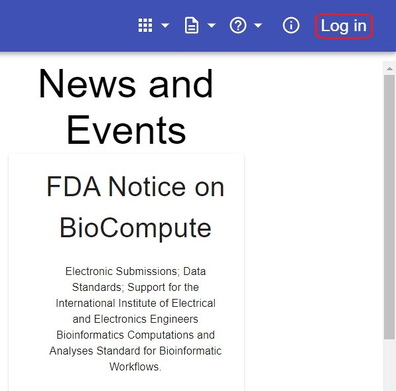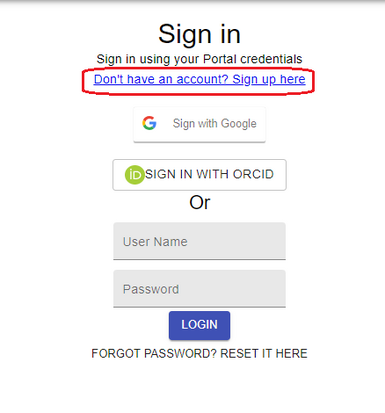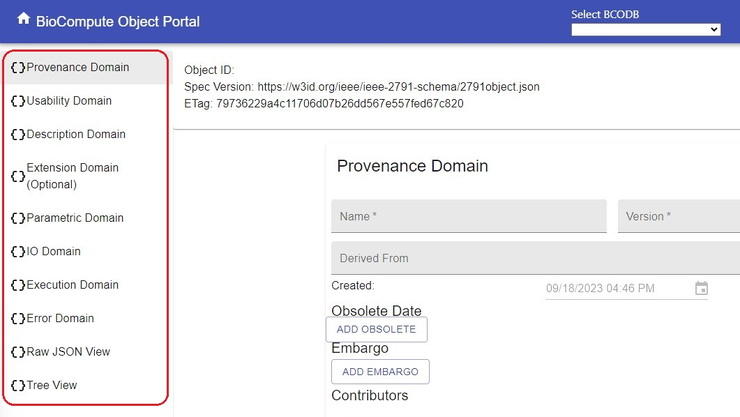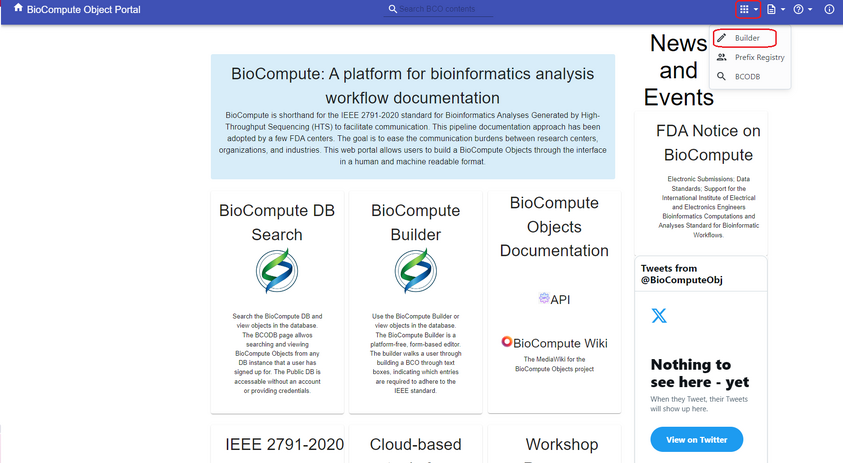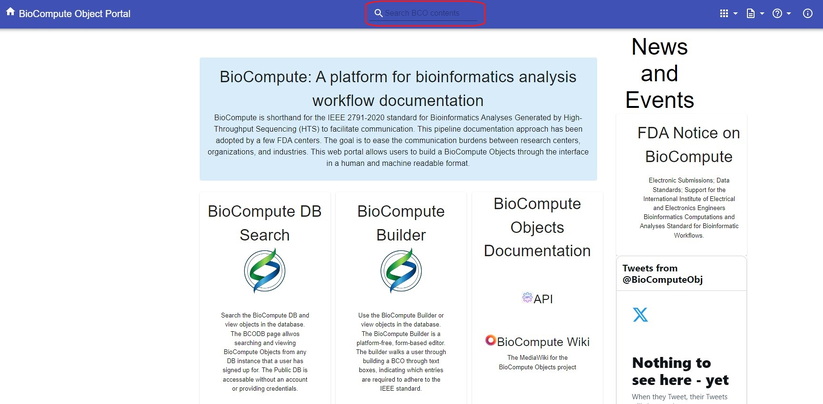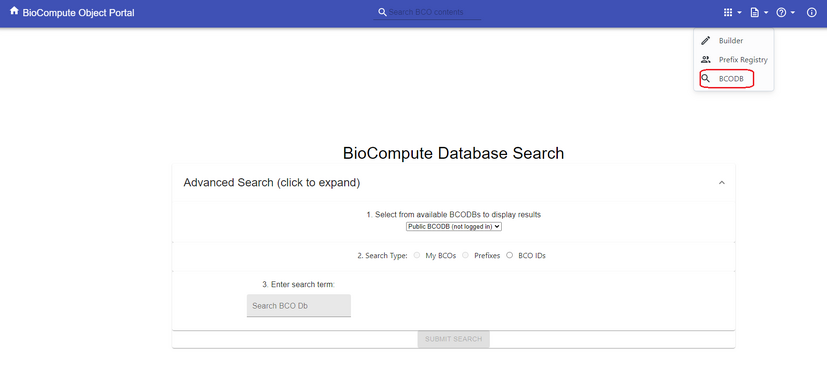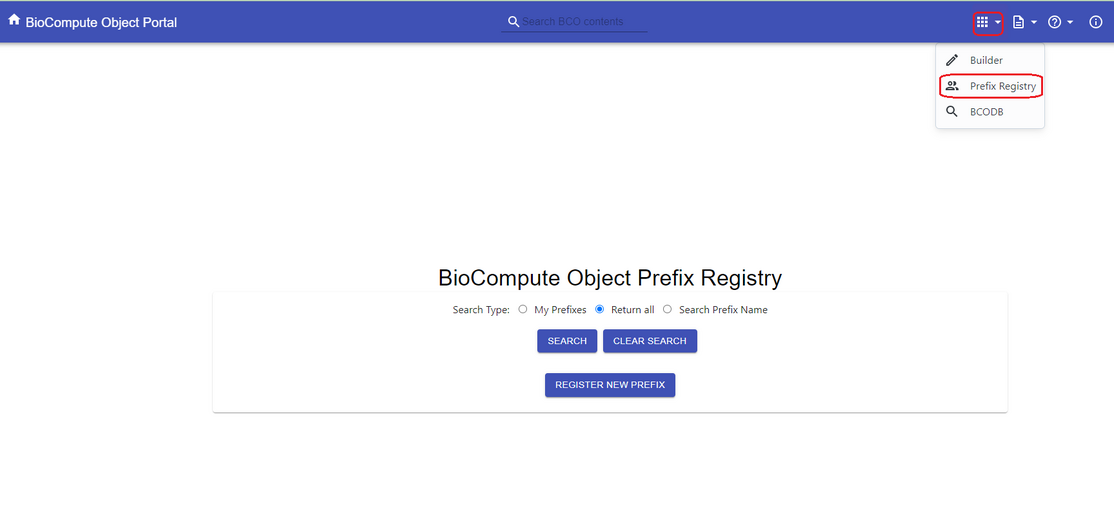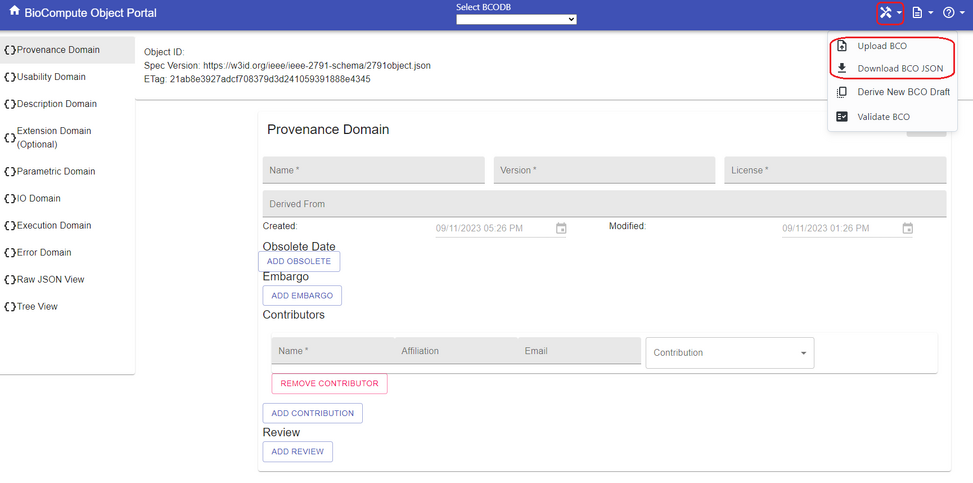Quick Start Guide
BioCompute is a powerful tool used for workflow documentation of bioinformatics analyses which allows for transparency and reproducibility in bioinformatics research. A BioCompute Object (BCO) is a representation of your analyses to show the workflow created on this platform.
Now, let’s get started with BioCompute Objects! Please visit: https://biocomputeobject.org/
How to get started
- Create an account ‘ ’: Sign up for an account to access the platforms features using the 'Log in' button on the right hand corner of the screen. This will direct you to a sign in page where you can log in or sign up for a new account.
- Navigating the interface: When creating a BioCompute Object (BCO) there are various domains that will require attention as each of them serve as a specific purpose in documentation to maintain accuracy and comprehensiveness. To get started with the builder, please click on the drop down menu on the top right of the screen. There are eight top-level domains, only five of which are required: Provenance domain, Usability domain, Description domain, Execution domain, and Input and Output Domain. Please get acquainted with the different domains to understand what information is essential to the sections.
- Accessing documentation: Visit our documentation at https://wiki.biocomputeobject.org/index.php?title=Search. The platform offers convenient access to public BioCompute (BCOs) for searching and downloading, even without signing in. However, to create and modify BCOs, signing in is necessary. Valuable resources can be found throughout the WikiPage to help you navigate the platform effectively.
How to create a BCO
- Starting a New BCO: To create a new BCO, click on the BCO tools icon shown in the top right corner. From the drop-down menu, select the ‘Builder’ icon. This will direct you to a page with the different domains on the left side of the screen.
- Defining workflows and Analysis: Defining the workflow and the parameters will be dependent on the analysis being conducted Pay close attention to the details of your analysis to ensure accuracy in parameters and other metadata fields, such as title, description, and author information. When collating the workflow and analysis, remember to include data sources and complete the domains to appropriately reflect your references and guides.
- Saving and Publishing: Before publishing, review and save the BCO to ensure accuracy of the information that you have entered into your BCO and that your data is not lost. Once you are certain that your documentation is complete, you can proceed to publish the BCO, making it accessible to collaborators or the community if desired.
Where do I go to search for an existing BCO
- BioCompute Database Search: At the top of the page, you'll find a convenient search bar. It provides direct access to the BCO repository, where you can explore and search for existing BioCompute Objects (BCOs)
- Advanced Search: If you need more specific search results, we offer an advanced search option. You can filter your search by BCO IDs, names/titles, and prefixes. This feature allows for precise and efficient discovery of the BCOs you're looking for.
- Prefix Registry: The Prefix Registry is a BioCompute feature that helps you organize and collaborate efficiently. It allows you to group related BioCompute Objects (BCOs) under specific prefixes. For example, … Instead of juggling multiple BCOs from different projects or areas, you can assign a unique prefix to each project or category. This makes it easy to distinguish and find BCOs when you search or collaborate. In a nutshell, the Prefix Registry streamlines organization and collaboration by providing clear labels for your BCOs, making your work more efficient.
- Downloading and Viewing BCOs: On the builder page, you have the option to download BCOs directly to your local device as JSON files to be viewed offline at your convenience. If you have BCOs stored that you would like to bring to the BioCompute platform, you can easily upload them seamlessly from your device for further editing, sharing, or collaboration. This functionality enhances your workflow by providing flexibility and accessibility to your BCOs from anywhere, at any time.
